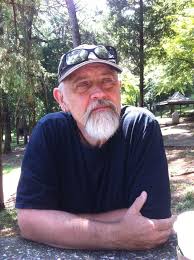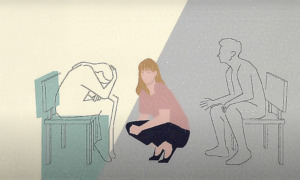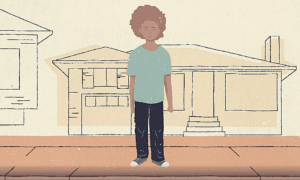
Lightspring/Shutterstock
.
As we enter the third decade of the 21st century, we are surrounded by reports and images of abandoned and neglected children worldwide. From images of drowned immigrant children in Europe and the U.S., to young people in cages at the U.S. border, and youth living on the street in barrios, favelas, ghettos and urban centers across the planet, the 24-hour news cycle presents us with a flood of images demonstrating, in the harshest terms, our social brutality towards the next generation.
We have great rhetoric about the importance of young people as the future, but just as we seem to have lost interest in genuinely caring for the future in ecological terms, we also seem to have lost interest in caring for the next generation. There appears to be a cynicism driving my generation that precludes taking the necessary material actions necessary for care of anything or anyone other than ourselves. We go on and on about the importance of “self” care, while abandoning any “other” to the whims and mercies of a rapidly deteriorating social and biological milieu.
Generative vs. genocide
In her powerful book, “Wild Dog Dreaming: Love and Extinction,” Deborah Rose Bird writes about the ongoing slaughter of “dingos,” or wild dogs, by white pastoralists in Australia. She connects this ridding of “pests” through vicious campaigns of poison and shooting to the history of genocide that has been the hallmark of the colonial project since its inception. In a beautifully nuanced accounting of life and death, she points out the difference between killing an animal for food and killing simply because you can.

Hans Skott-Myhre
In the Australian aboriginal context, the death of any aspect of the ecological system in which one is embedded is understood to have a generative effect on those that live on. If any living thing dies, its death is designed to give life to others. So to kill an animal is a sacred trust embedded in a generative relation between life and death. It is a set of living relations premised in a mutuality in which we all die and we all give life.
Rose Bird points out that to kill without relation is simply death. The genocides of indigenous peoples, the Nazi holocaust, the massacre of street children in Brazil, factory slaughters of animals, the killing of “pests” like the dingo and the casual extermination of an ever-increasing number of species driven to extinction by capitalism’s drive to progress is bereft of the critical ecological element of living force. It is simply an assertion of the capacity to deploy dominant power to its logical ends; death and ultimately entropy.
Giorgio Agamben talks about the production of categories of living things that can be killed without breaking the laws of the dominant system. He refers to these bodies as “bare life.” That is, bodies that have no protection from the modern state, no appeal to law, nothing to shield them from the assertions of power in its deployment of death as an inheritance of perverse privilege. In our current system of unbridled and ever-proliferating erosion of material care for living things, including young people, I have to wonder how many of us and the next generation have become “bare life.”
It is important to note, in terms of juvenile justice, that the category of bare life is extrajudicial. It very intentionally stands outside the law. For example, the Nazis stripped Jews of citizenship before killing them, undocumented migrant youth are at the mercy of the state because they have no papers to grant them rights in the countries where they are seeking asylum, street youth are often without driver’s licenses, social security cards and birth certificates that are necessary to gain access to housing and jobs, and children in refugee camps have no legal standing vis-a-vis state protection.
Being outside the law
To be homeless under the law is to open oneself to the indeterminate status of bare life. Of course, this is also true to varying degrees once a young person enters care under the system of juvenile justice. Because it is adult legislators who solely determine the terms and conditions of juvenile incarceration, young people have no ability to meaningfully engage in the determination of their rights under law.
Adult psychologists and legal scholars have argued that contemporary frameworks of lifespan development precludes rational decision making until the frontal lobe of the brain is fully formed. As a result, young people are necessarily excluded from full participation in determining the terms of their engagement with the law.
While these adults may be well-intentioned, their arguments place young people outside the law. As such, it might well be reasonably argued that although they have been granted a certain kind of second-hand legal standing, they are still in important ways bare life. This has important considerations for how we as a society manage care for a population of young people who will succeed us but who have little or no legal standing as citizens.
In her writing, Rose Bird references James Hatley in his philosophical explorations of death and life. Hatley describes the generational transmission of culture, memory, traditions and wisdom as a kind of wave that “lifts up and sustains the individuals of each succeeding generation.” All of us make a unique contribution to the ways in which succeeding waves shift and change over time. Hatley argues that no wave belongs to the past or one’s forebears, “precisely because [it] … is a transitive crossing-over that generates a new existence characterized in terms of a new responsibility.”
This interweaving of generational productive force is central to the production of the world. The complex and delicate relation of those who die to those who live is interleaved in a rich ecological pattern that connects all things and all times. Death brought about simply as willful destruction is diametrically opposed to death as a form of ecological waves of living force. Rose Bird states that forces of death as an assertion of willful power acts as if no one and nothing else matters. As if time could be ignored and others forgotten. As if this life were nothing but an exercise in self-promotion and narcissistic investments.
Bare life and the bodies subject to its logic of abandonment and betrayal is one of the mechanisms for the “will-to-destruction” so evident in our world today. Young people as bare life are opened onto death for death’s sake in a perversion of the generational force of death interwoven into patterns of life. When we abandon our young, as though their lives have nothing to do with our own, we poison our social ecology.
Extinction of more than animals
Felix Guattari, in his book “The Three Ecologies” discusses the relation of social and mental ecologies to the biological. He suggests that just as extinctions are occurring at an alarming rate in the world of plants and animals, extinctions of modes of culture and society are also occurring at incomprehensible speed. The fact that under capitalism forms of fundamental social cohesion and care, such as nurturing the next generation, are eroding may well have devastating implications for our living ecology as a species.
Despite capitalism’s clarion call to the individual as the primary mode of subjectivication, we are not separable from one another. Healthy biological ecologies thrive on a rich tapestry of divergent and multiplicitous genetic possibilities. The ability of any given ecology to avoid collapse and systemic death through entropy lies in its morphogenetic capacity to adjust: in its ability to deploy radical difference in the face of a changing and shifting environment. Under conditions of proliferating and escalating species extinctions, capacities of response are radically depleted. Similarly, if a social or mental ecology faces the extinction of certain complex forms of organizational caring, society is at risk for ecological collapse as a social system.
There are, of course, warning signs. The proliferation of young people as bare life may well be one. We live in a society where an increasing number of the next generation are seen as disposable. As we have moved from the industrial capitalism of the 20th century into the virtual global capitalism of the 21st century, the reliance of capital on living bodies for labor has shifted. The primary mode of production is now what Antonio Negri terms immaterial labor, or the kind of labor to be found on social media or other forms of virtual production.
Our youth not dispensable
This shift in the kinds of activities that create massive amounts of profit has meant that the kinds of labor that previous generations did to survive and prosper are no longer available to the same degree for young people today. Wages are lower, full-time work less available, health care benefits harder to come by (particularly in the U.S.), education and training less relevant, housing costs more expensive and modes of addiction and other forms of self-destruction cheaper and more accessible.
There are powerful hints that we have entered a new era of feudalism in which the wealthy decide who and what is valuable and worthy of continuance and support. As the late Toni Morrison said in a conversation with Angela Davis, we have moved from being citizens to becoming consumers and in that shift we have lost our sense of collective force and accountability to each other. Our worth is no longer measured in terms of our social contribution, but only in terms of our ability to generate wealth for the ruling class.
And what of those bodies that fall outside the parameters of wealth generation? What of those whose skills and inclinations don’t fit within the system of perpetual training and a seemingly endless conveyor belt of low-wage jobs? Those bodies whose families already face the social devastation of addiction, the corruption of generational care, the violence of endlessly deferred expectations? The young people whose hopes and expectations are bound to a world already past or a world that has not yet arrived?
These are our homeless children and youth. Some of them literally without a home, living on the streets or shifting from place to place without stable or safe shelter. But these are also those young people seeking asylum, bodies flowing across borders, forced into refugee camps and subject to the bullets and bombs of those who seek death for death’s sake. These are the ways that we treat the next generation as disposable bodies, as bare life. But they are not and never have been disposable or dispensable. They are valuable beyond measure. They are us and we are them and if we are to avoid extinction, we must affirm the living force we share together.
Hans Skott-Myhre is a professor in the Social Work and Human Services Department at Kennesaw State University, is cross-appointed to the graduate program in psychology at the University of West Georgia and holds appointments at Brock University and the University of Victoria. He is the author of “Youth Subcultures as Creative Force: Creating New Spaces for Radical Youth Work” and co-editor with Chris Richardson of “Habitus of the Hood,” co-editor with Kiaras Gharabaghi and Mark Krueger of “With Children and Youth” as well as co-editor with Veronica Pacini-Ketchabaw and Kathleen S.G. Skott-Myhre of “Youth Work, Early Education and Psychology: Liminal Encounters.”































